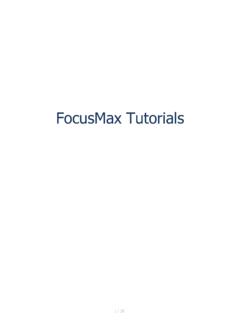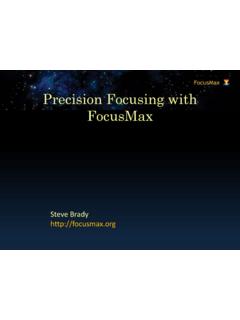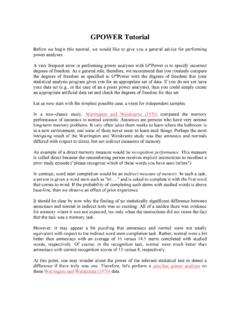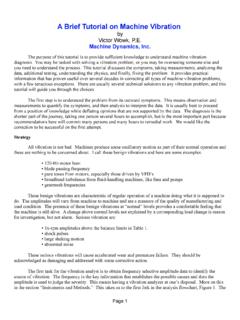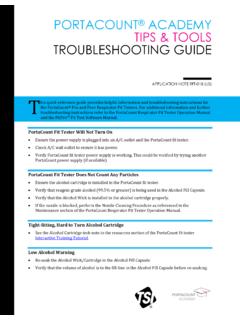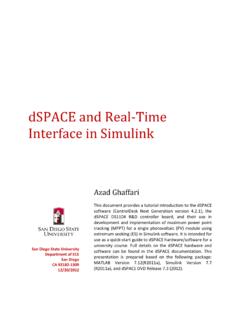Transcription of Image Processing Tutorial Basic Concepts - CCDWare
1 Image Processing Tutorial Basic Concepts CCDWare Publishing 2005 CCDWare Publishing CCDS tack Basic Image Processing Tutorial Page 2 of 55 Table of Contents 3 Starting Creating Calibration Frames .. 5 Create your Master Bias Frame .. 5 Create your Master Dark Frame .. 8 Create your Master Flat Frame .. 12 Creating a Master Light Frame .. 16 Load Light Exposures .. 16 Calibrate Images .. 20 Dynamic DDP Scaling .. 21 Align Images .. 22 Resample Images .. 27 Normalize Images .. 28 Data 29 Combining Images .. 33 Saving our 35 Saving FITS files .. 35 Rescaling Images .. 35 Saving TIFF files .. 37 Saving the Screen Display .. 37 Gradient Removal .. 38 Flatten Background .. 38 LRGB 40 Loading LRGB Masters.
2 40 Creating a LRGB Color Image .. 42 Background Normalization .. 43 Making Color 44 Balancing White 46 Enhanced 48 Creating Our Final Image .. 52 Exporting our Image Final Image .. 52 Conclusion .. 54 Support Options ..55 General Questions .. 55 Technical Support .. 55 CCDS tack Basic Image Processing Tutorial Page 3 of 55 Introduction The following Tutorial is meant to give you a Basic understanding of how CCDS tack works as well as a suggested workflow for CCD Image Processing . There are many advanced features of CCDS tack not covered in this Tutorial . Please see the help file included with CCDS tack to learn more about the power of this Image Processing program. We hope you find this Tutorial helpful and it gets you started creating fantastic CCD images.
3 For more information and support, please visit the CCDWare website at: Copyright Notice: All sample images are copyright 2005 by Richard A. Bennion of the Ewell Observatory. The sample images contained in the Tutorial are a small subset of a much longer exposure of M101. To keep file size down, only 10 of the 100 exposures are included for this Tutorial . To see the final results of this Image processed with CCDS tack, please see: CCDS tack Basic Image Processing Tutorial Page 4 of 55 Starting CCDS tack Click on the CCDS tack icon on your desktop. This will bring up an empty CCDS tack application window: CCDS tack Basic Image Processing Tutorial Page 5 of 55 Creating Calibration Frames The first step in Processing your images is to create your master calibration frames.
4 Create your Master Bias Frame From the main menu, select PROCESS > CALIBRATE > MAKE MASTER BIAS From the CCDS tack Sample Files, navigate to the Bias Frames directory and select all the bias frames. Note: Use the CTRL-A keyboard shortcut to select all files quickly. CCDS tack Basic Image Processing Tutorial Page 6 of 55 Once you click the Open button on the above dialog box, you will be presented with the bias frame Combine Settings dialog box: Use the above settings, and click the OK button. You will then be asked where you would like to save the master bias frame. Select the Calibration Masters directory in the CCDS tack Sample Files and click Save. CCDS tack Basic Image Processing Tutorial Page 7 of 55 After a few moments, you will be presented with your master bias frame.
5 CCDS tack Basic Image Processing Tutorial Page 8 of 55 Create your Master Dark Frame From the main menu, select PROCESS > CALIBRATE > MAKE MASTER DARK. From the CCDS tack Sample Files, navigate to the Dark Frames directory and select all the dark frames. CCDS tack Basic Image Processing Tutorial Page 9 of 55 Once you click the Open button on the above dialog box, you will be presented with the dark frame Combine Settings dialog box: Use the above settings, and click the OK button. You will then be asked where you would like to save the master dark frame. Select the Calibration Masters directory in the CCDS tack Sample Files and click Save. CCDS tack Basic Image Processing Tutorial Page 10 of 55 After a few moments, you will be presented with your master bias frame.
6 You will notice that you now have two images in your stack. You can click on either file to view it and use the Adjust Display dialog box to change the screen display of the bias and dark frames. CCDS tack Basic Image Processing Tutorial Page 11 of 55 Another useful piece of information is statistics about your calibration frames. Select the Dark Master from the ImageManager dialog box so that it is displayed on screen. Using your mouse, draw a rectangle at some point on your dark frame. This will bring up the Information window: The Information window displays important information and statistics about your data: Close the Information window. CCDS tack Basic Image Processing Tutorial Page 12 of 55 Create your Master Flat Frame Now we are going to create our final calibration master, our flat frame.
7 From the main menu, select PROCESS > CALIBRATE > MAKE MASTER FLAT. From the CCDS tack Sample Files, navigate to the Flat Frames directory and select all the flat frames. CCDS tack Basic Image Processing Tutorial Page 13 of 55 You will then be presented the option to Dark or Bias subtract your flat frames. Select Yes at the following dialog box: You are now asked to select the Dark or Bias master you would like to use to calibrate your flat frames. Navigate to the Calibration Masters directory and select the file. Once you click the Open button on the above dialog box, you will be presented with the flat frame combine settings dialog box: CCDS tack Basic Image Processing Tutorial Page 14 of 55 Use the above settings, and click the OK button.
8 You will then be asked where you would like to save the master flat frame. Select the Calibration Masters directory in the CCDS tack Sample Files and click Save. After a few moments, you will be presented with your master flat frame. CCDS tack Basic Image Processing Tutorial Page 15 of 55 You will now see all three of your master calibration frames in the ImageManager. Feel free to look at the different files and get a feel for the Magnification dialog box as well as the Adjust Display dialog box. Before moving on to the next section of this Tutorial , please select FILE > REMOVE ALL IMAGES (CLEAR) to remove all the calibration frames from the ImageManager. CCDS tack Basic Image Processing Tutorial Page 16 of 55 Creating a Master Light Frame Load Light Exposures Now that we have created all of our master calibration frames, it is time to create a master light frame.
9 The process is the same for any series of exposures taken with a particular filter and bin mode. First we need to open our raw exposures. From the main menu select FILE > OPEN and navigate to the Light Frames directory in the CCDS tack Sample Files. Notes: You can use the CTRL-O keyboard shortcut to bring up the open dialog box. In addition you can drag and drop files into the CCDS tack application to add them to the ImageManager. CCDS tack Basic Image Processing Tutorial Page 17 of 55 Once our images are loaded, our screen should look something like this: Let s take a few moments to explore some key features of the CCDS tack interface before we move forward with our Processing workflow: The Magnification window The Magnification window allows you to zoom in and out the entire stack of images contained in the ImageManager.
10 Explore how the Show Pixels check box changes the operation of the magnification slider. Using your mouse, select an area of the Image and click the Zoom to Selection button on the Magnification window. When you are done exploring, check the Size to window option to return the Image back to the above state. CCDS tack Basic Image Processing Tutorial Page 18 of 55 The Select window The Select window allows us to step back and forth between our images. Click the forward and back arrows to cycle through your stack. Notice how the ImageManager window indicates what Image of the stack is currently being displayed. Click the Blink button to automatically cycle through your images in an animated fashion. While in Blink mode, the forward and backward buttons, turn into options to speed up or slow down the blink sequence.
